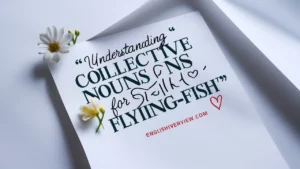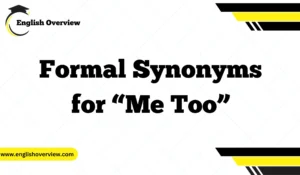Understanding when to use a comma before “though” can be a bit tricky, but it’s crucial for clear and correct writing. “Though” is a versatile word that can change the meaning or tone of a sentence, and knowing how to punctuate sentences with “though” properly will make your writing more effective.
This guide will provide you with simple rules and examples to help you master the use of commas with “though.”
Rule 1: When “Though” Connects Independent Clauses

What to Do
When “though” is used to connect two independent clauses (parts of a sentence that can stand alone as complete sentences), you typically do not place a comma before “though.”
Correct Examples:
- “I wanted to stay home though I went to the party.”
- “She was tired though she finished the marathon.”
Incorrect Examples:
- “I wanted to stay home, though I went to the party.”
- “She was tired, though she finished the marathon.”
Why It Matters
Using “though” to connect independent clauses without a comma keeps the sentence flowing smoothly and avoids unnecessary pauses.
Rule 2: Beginning Sentences with “Though”
What to Do
When starting a sentence with “though,” it’s common to use a comma after the introductory phrase that “though” begins.
Correct Examples:
- “Though I was late, I didn’t miss the beginning of the movie.”
- “Though it was raining, we decided to go for a walk.”
Incorrect Examples:
- “Though, I was late I didn’t miss the beginning of the movie.”
- “Though it was raining we decided to go for a walk.”
Why It Matters
Starting a sentence with “though” followed by a comma sets the stage for a contrast or exception, making your message clearer.
Read More: Do You Put a Comma Before “Especially”?
Rule 3: “Though” at the End of Sentences
What to Do
When “though” is used at the end of a sentence to indicate a contrasting idea or an afterthought, it is often preceded by a comma.
Correct Examples:
- “I went to the party, though.”
- “It was raining, though.”
Incorrect Examples:
- “I went to the party though.”
- “It was raining though.”
Why It Matters
Placing a comma before “though” at the end of a sentence clearly separates it from the rest of the sentence, highlighting the contrast or afterthought.
Rule 4: “Though” Indicating a Degree of Manner
What to Do
When “though” is used to indicate a degree or manner and not to introduce a contrast or an afterthought, you do not need to use a comma.
Correct Examples:
- “Expensive though it was, it was worth every penny.”
- “Young though she may be, she’s very responsible.”
Incorrect Examples:
- “Expensive, though it was, it was worth every penny.”
- “Young, though she may be, she’s very responsible.”
Why It Matters
In cases where “though” describes the manner or degree of something, the sentence structure typically requires a comma for clarity, but not directly before “though.”
Summary
Understanding when and where to place a comma in relation to “though” can enhance the clarity and readability of your writing. By following these simple rules and examples, you’ll be able to use “though” correctly in various contexts. Remember, the key is to consider the role “though” plays in your sentence: Is it connecting clauses, starting a sentence, adding an afterthought, or indicating a degree or manner? Your answer will guide you on whether or not to use a comma.

Justin Taylor is currently an English instructor at a university. She has experience in teaching and assessing English tests including TOEFL, IELTS, BULATS, FCE, CAE, and PTEG. With over a decade of teaching expertise, Justin Taylor utilizes his knowledge to develop English lessons for her audience on English Overview.









